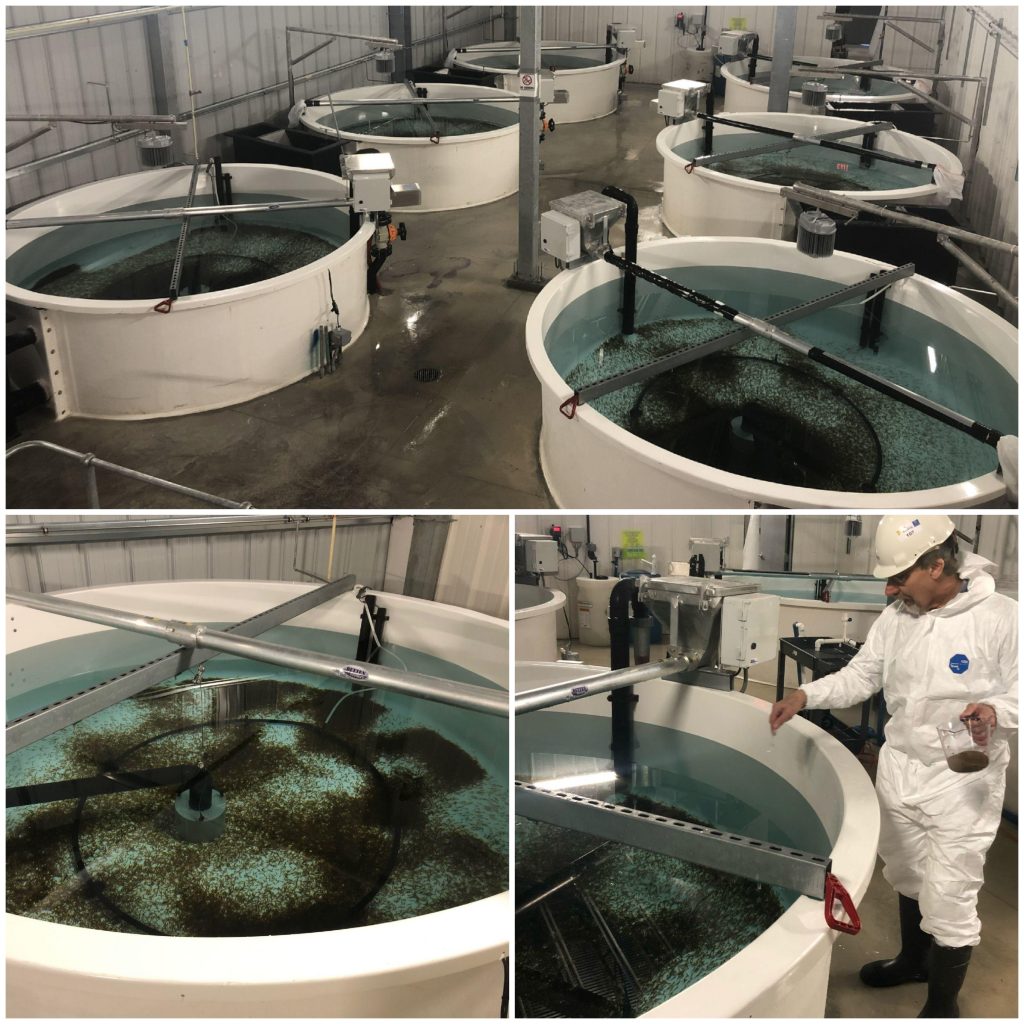
Atlantic Sapphire: We’re just months away from succeeding
September 23, 2021
By
Liza Mayer
‘Harvest in mid-2022 will show what land-based is capable of,’ says exec
 File photo shows first batch of fingerlings being fed at the Florida facility. The US operations have fixed all issues, considerably lowering the risk in day-to-day operations, says CFO and managing director Karl Øystein Øyehaug. (Photo: Atlantic Sapphire)
File photo shows first batch of fingerlings being fed at the Florida facility. The US operations have fixed all issues, considerably lowering the risk in day-to-day operations, says CFO and managing director Karl Øystein Øyehaug. (Photo: Atlantic Sapphire) Atlantic Sapphire has been hit with unfortunate circumstances over the last several months, but there’s been progress behind the grim headlines, says company CFO and managing director, Karl Øystein Øyehaug.
He says the company is only “months away” from showing the world what land-based salmon farming could do.
The Florida facility has, over the last couple of months, finally achieved stable operating conditions that the fish need in order to thrive, he said, which was something that the early batches of fish didn’t have.
The company has blamed construction-related issues for the massive fish losses – five incidents since February 2020.
“This has had an effect on our ability to provide our fish with the right conditions, and therefore, also to deliver on the volume side, which directly results in financial performance,” Øyehaug said Sept. 23 in Undercurrent webinar, “The land-based RAS boom in the balance.”
A shakeup of the organization following the loss of 500 tons of salmon at the Florida facility in March has lent some stability.
“Now, all of those issues have been fixed, risk is considerably lower in our day-to-day operations. We are now operating more than 12 independent systems, all stocked with fish. And when the fish introduced in middle of 2020 are harvested in mid-2022, the industry will really see what it could aim for here and what the economics really look like,” said Øyehaug.
“Investors can expect this to really see biological KPIs on the new batches of salmon we have in our US facility that have actually had the conditions that we know as salmon farmers they need in order to deliver biologically.
“So what we will be doing over the next 12 months until we are in full, steady-state production in Phase 1 is to give the investor community KPIs on how things are going, how our growth curves looking, how is biomass gain is looking to make it easier for people to track the positive developments because at the end of the day and the reality with salmon farm, is that there is a long lifecycle from egg to harvest.
“So we were going to develop our reporting even further to make it easier to follow everything from all the positives we’re seeing on the demand side. But, also most importantly, on the biological side because the financial story of land-based is all about producing, sufficient volumes to justify the high upfront costs. We can fortunately see positive indicators of that biologic performance long time before the actual harvest of the fish happens.”
Advertisement
He lamented these positive indicators in its operations have been overshadowed by recent events, including the fire at its Denmark facility that gutted the pilot facility, killed all the fish and erased a quarter of the company’s market value.
“Being publicly listed and having to notify the outside world of everything that happens in the company basically, that has its pros and cons. There is no doubt that when we have negative events, such as a fire (in Denmark)… then that is something that really overshadows all of the very important positive developments that happened day-to-day in our operations,” he said.
- Viewpoint: Fallout from the fire at Atlantic Sapphire in Denmark
- XpertSea named one of Canada’s Top 100 Growing Companies





